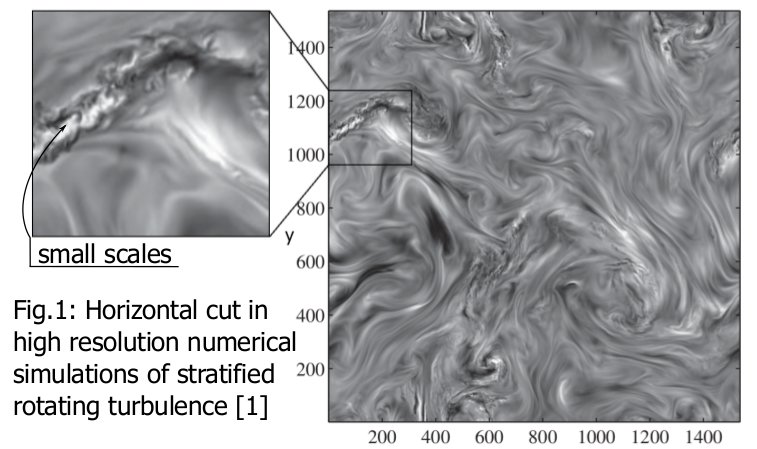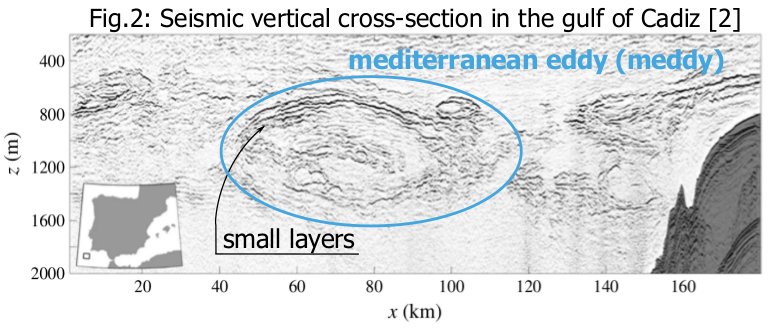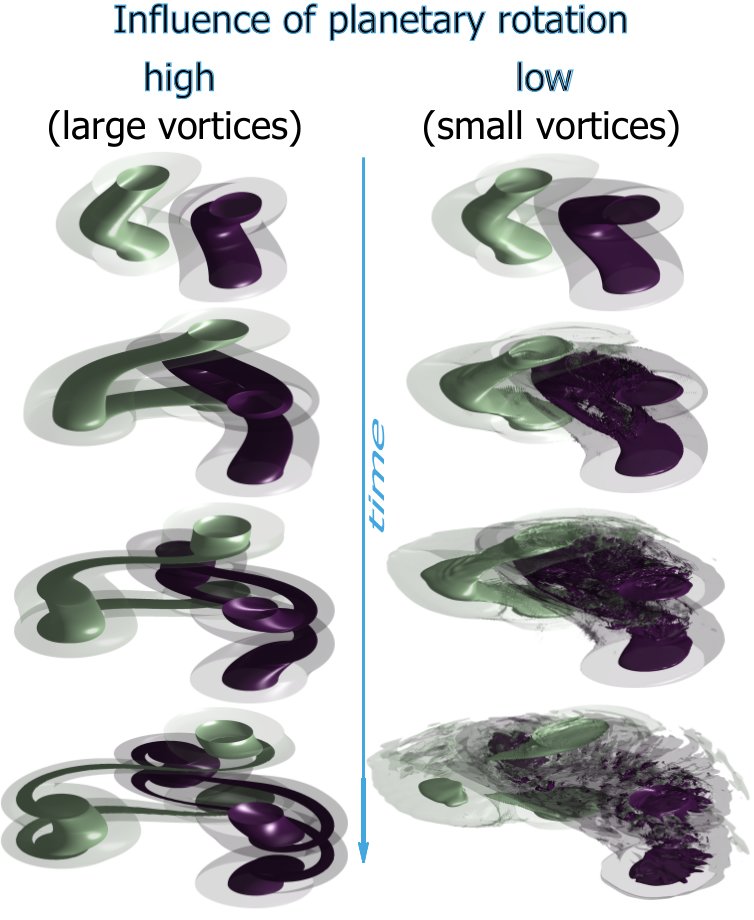Energy dissipation
J. Basley - P. Billant - J-M. Chomaz
Publications
A. Deloncle, P. Billant and J-M. Chomaz 2008 Nonlinear evolution of the zigzag instability in stratified fluids: a shortcut on the route to dissipation. J. Fluid Mech, 599, 229-239. (Preprint)
How is energy dissipated in the ocean and atmosphere ?
Context
At large scale, atmosphere and oceans are dominated by planetary rotation and density stratification. This lead to two-dimensionnal like dynamics in with the energy injected by solar radiation goes to largest scale. Since large scales are almost non-dissipative, it is still unclear how and where energy is dissipated.


Recent studies [1,2] have revealed that part of energy can also transfered to small dissipative scales.
Results
We investigate the formation of small scales in the case of a dipole in a stratified rotating fluid, by means of direct numerical simulations.
Small scales are generated if the effect of planetary rotation is not too high, ie. when the radius of vortices si small enough.


